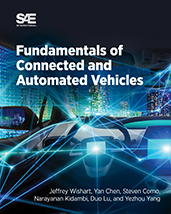Technical Paper
Infrastructure-Based LiDAR Monitoring for Assessing Automated Driving Safety
2022-03-29
2022-01-0081
The successful deployment of automated vehicles (AVs) has recently coincided with the use of off-board sensors for assessments of operational safety. Many intersections and roadways have monocular cameras used primarily for traffic monitoring; however, monocular cameras may not be sufficient to allow for useful AV operational safety assessments to be made in all operational design domains (ODDs) such as low ambient light and inclement weather conditions. Additional sensor modalities such as Light Detecting and Ranging (LiDAR) sensors allow for a wider range of scenarios to be accommodated and may also provide improved measurements of the Operational Safety Assessment (OSA) metrics previously introduced by the Institute of Automated Mobility (IAM).

